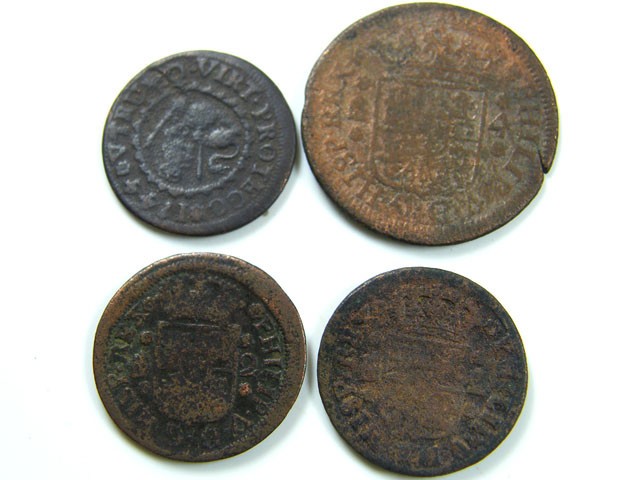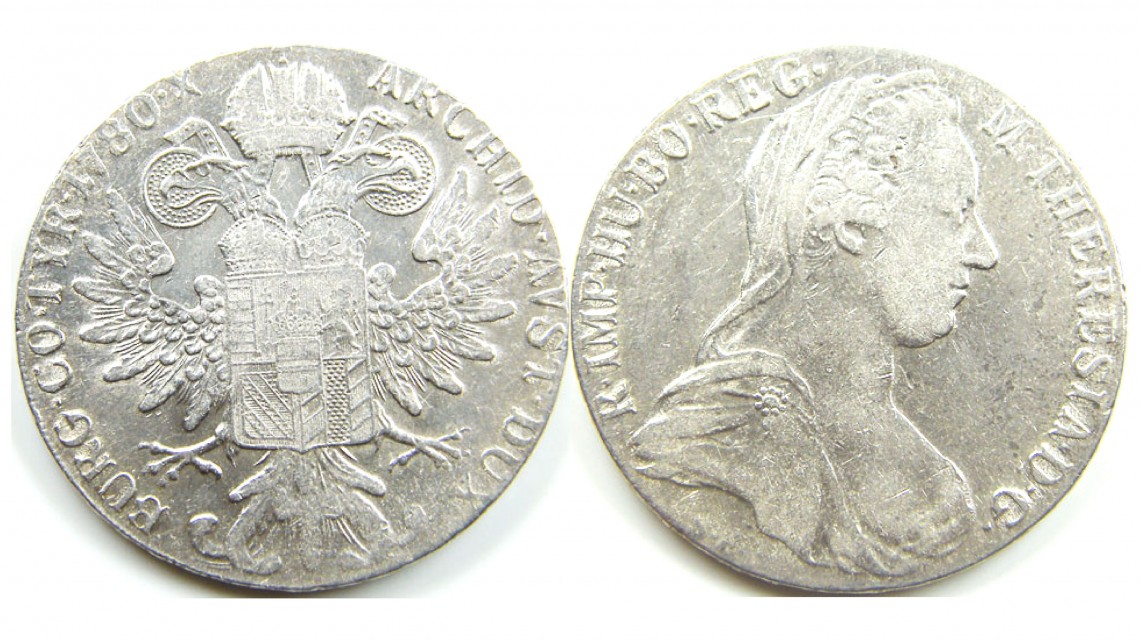
发布时间12th Apr 2018
修改于12th Apr 2018
世界硬币

世界硬币基本上是来自世界各地的各种硬币样本的集合。收集这些样本既有趣又有教育意义;然而,有很多面值较高的硬币可以作为一种投资形式来收集。
各国如何铸造银币来显示自己的权力。
古罗马人和希腊人
第一批铸币来自小亚细亚的吕底亚,可追溯到公元前 600 年。很快,铸币的理念便像野火一样传播开来,希腊人很快采用并修改了铸币体系,然后整个地中海地区也开始使用希腊铸币进行贸易。公元前 3 世纪,罗马人开始铸造自己的钱币,并很快开始统治希腊化君主,然而在整个地中海地区,并没有统一的货币体系。东部地区继续使用当地铸造的钱币,而西部地区则继续使用第纳尔。罗马人和希腊人并不是唯一在地中海地区发行钱币的人,其他人包括犹太人、腓尼基人、凯尔特人、迦太基人以及阿拉伯和伊比利亚半岛的其他地区。 
西班牙语
1492年,美洲被西班牙殖民后,在墨西哥(当时称为新西班牙)、秘鲁等地发现了一些重要矿藏,尤其是在波托西(现玻利维亚)发现了银矿。采矿地点由西班牙王室授权,协议规定五分之一的收益将分配给王室。秘鲁和墨西哥是西班牙王室建立铸币厂的两个地方,因此统一铸造的高质量硬币开始传播,并导致硬币成为国际货币。西班牙王室开始与欧洲和亚洲进行贸易,中国人对银币产生了兴趣,他们用丝绸、中国瓷器和其他奢侈品换取高质量的西班牙银币。

美国银鹰
这是美国的官方银币,于 1986 年在旧金山发行。它只有一种尺寸,即一金衡盎司,面值为 1 美元。保证硬币由 99.9% 的纯银制成。银鹰银币上没有铸币厂标记,这些银币在 1986 年至 1998 年期间在旧金山铸币厂生产,然后铸币厂在 1999 年至 2000 年间转移到费城铸币厂。1986 年至 1992 年间,旧金山负责铸造银鹰精制币,硬币上带有“S”标记,1993 年至 2000 年间,由于铸币厂由费城负责,因此带有“P”标记。2001 年至 2008 年间,West Pont 接管了铸币厂,并带有“W”标记。美国银鹰直径为40.6毫米,厚度为2.98毫米,边缘有凹槽。正面是阿道夫·A·温曼设计的行走自由女神像,背面是约翰·梅尔坎蒂设计的纹章鹰、盾牌、箭和十三颗星。

1922 年和 1923 年和平银元
这是从 1921 年至 1928 年铸造的,然后从 1934 年至 1935 年铸造的。这枚美国一美元硬币是由 Anthony de Francisci 设计的。1922 年 1 月,和平一美元开始流通。旧金山铸币厂铸造了 17,475,000 枚这种硬币,但是,关于这枚硬币未流通状态的信息并不多,因为原始铸造的硬币中有很大一部分已经流通。这枚硬币是由 Anthony de Francisci 设计的,硬币上印有年轻时的自由女神像,头戴光芒四射的王冠。Farran Zerbe 和其他一些人在“第一次世界大战”结束时给这枚硬币起了“和平币/美元”这个名字。

加拿大枫叶硬币
这是世界上最受欢迎的硬币之一;加拿大皇家铸币厂于 1979 年开始开采这种硬币。加拿大皇家铸币厂非常注重铸造高品质硬币,同时考虑金属纯度和设计。两种最受欢迎的加拿大枫叶硬币是银枫叶硬币和加拿大金枫叶硬币,这两种硬币都是以最纯净的形式铸造的。硬币有不同的重量版本,最小为 1 金衡盎司,其他为:1 克、1/25 盎司、1/20 盎司、1/10 盎司、¼ 盎司和 ½ 盎司。正面是加拿大女王二世的肖像,反面是加拿大枫叶。硬币的边缘呈锯齿状,直径为 30.00 毫米。它的面值为 50.00 加元。 
不列颠尼亚硬币
英国皇家铸币厂发行这些英国金币。1987 年,铸币厂开始铸造金币,1997 年才开始铸造银币。1 金衡盎司的不列颠尼亚金币面值为 100 英镑;也有小尺寸的金币可供选择。另一方面,不列颠尼亚银币含有 1 金衡盎司的银,面值为 2 英镑。它们的尺寸只有金币的几分之一。正面是伊丽莎白二世女王的侧面像,由 Jody Clark 设计,反面是 Philip Nathan 设计的不列颠尼亚。 
南非——克鲁格金币
这枚南非金币于 1967 年开始铸造,推动了南非黄金市场的发展。1 克朗相当于 1 金衡盎司纯金。正面是奥托·舒尔茨设计的保罗·克鲁格侧面像,背面是科尔特·斯坦伯格设计的跳羚。 
澳大利亚珀斯铸币厂
这是澳大利亚政府所有的铸币厂,成立于 1899 年。该铸币厂以生产最优质的金银产品而闻名,包括澳大利亚银质农历币和澳大利亚金质农历币。 
奥地利泰勒
玛丽亚·特蕾莎银币 (MTT) 铸造于 1741 年,是一枚银币。它的名字来源于 1740 年至 1780 年间统治波希米亚、奥地利和匈牙利的皇后。她的名字是玛丽亚·特蕾莎。这枚硬币直径为 39.5-41 毫米,厚度为 2.5 毫米。银含量为 0.833,铜含量为 0.166。 
世界硬币
许多收藏家从购买某个国家的硬币中获得极大的满足感,尤其是如果这个国家不是你居住的国家。你可以收集类似的硬币,从动物到植物到野生动物或古代沉船硬币,甚至可以收集现在已经不存在的国家的硬币,如比属刚果、葡属几内亚、萨尔兰、西藏、马六甲。收集向我们展示国家或帝国历史的硬币非常有趣。考虑收集硬币或专攻这些专业领域中的一个或多个。你可以专攻和享受的领域之多令人难以置信。
古代钱币或中世纪钱币,罗马、希腊、伊斯兰、英国帝国钱币,荷属东印度硬币,法国领土硬币 世界各地的奥林匹克硬币 世界各地的体育硬币 收集代币 古代亚洲帝国 古代印度帝国 双金属硬币 低铸币硬币 世界各地动物图案硬币 宝石系列硬币 非洲硬币 纸币 梵蒂冈硬币 太平洋岛屿硬币 历史悠久的古钱币 中东硬币 中国硬币 澳大利亚十进制前硬币 硬币 精制币 未流通硬币 纳粹硬币 硬币书
研究硬币时,有很多历史需要学习。你知道吗,大约公元前七世纪,吕底亚(现今的土耳其)制造了一种金银块,称为琥珀金,用一次冲压就可以印上去。

大约在同一时间,印度河流域(现称为巴基斯坦)开始制造硬币,这些硬币由类似于标志的银条组成。在同一时期,中国也使用硬币进行易货贸易,他们制造了使用了几个世纪的铜币。
因此,开始收藏您喜欢的硬币吧,您可以购买完整的系列,即以一个系列制作的硬币,并拥有整个系列,或者购买一些零碎的硬币来增加您的收藏。许多收藏家并不将他们的收藏视为投资,而只是将其视为享受。因此,您的硬币是否有需求取决于您的参与程度和您收藏的内容。
如果你收藏稀有硬币,它们的价格就有可能上涨,但这同样是供需因素。例如,一个非洲国家可能会铸造有限的硬币,但不会有很多收藏家愿意为这些硬币支付溢价,但来自强大社会的稀有硬币总是有需求的。
我们建议您在将收藏视为一项投资之前,先将其作为一种爱好和享受,因为没有必要急于入手。例如,如果白银价格上涨,银币的价格会上涨,但当价格下跌时,这些投资者就会抛售,所以您需要制定购买银币的长期策略。显然,在花大钱之前,您需要具备产品知识。因此,您需要做好家庭作业,了解您感兴趣的时期的银币。
拍卖硬币的一大优势是卖家必须经过验证才能出售,并且必须是贸易或硬币组织的成员。
搜索Coin Encyclopedia
最新的文章
文章分类
Collection of articles providing lots of useful information on coins through the ages.
30文章数




